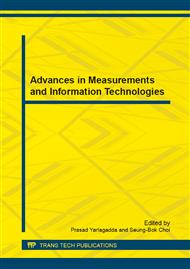[1]
Waters C.D.J. Vehicle Scheduling Revisited. Journal of Operational Research Society. 1984, Vol. 35(2):145-148.
Google Scholar
[2]
Linus Schrage.Formulation And Structure of More Complex/Realistic Routing and Scheduling Problem 1981, Vol. 11: 229-232.
Google Scholar
[3]
Bodin L. Gokden. B Classification in Vehicle Routing and Scheduling. Networks. 1981, Vol. 11:7-108.
Google Scholar
[4]
Assad AA. Modeling and Implementation Issues In Vehicle Routing: Method and Studies(Ed. By B.L. Golden and A.A Assad) Studies in Management Science and Systems. North-Holland,Amsterdam (1988), Vol. 16: 7-45.
Google Scholar
[5]
Desrocherg M, Lcustra J. K,Savelsbergh M W. A Classification scheme for Vehicle Routing and scheduling Problems. European journal of operational Research. (1990), Vol. 46: 322-332.
DOI: 10.1016/0377-2217(90)90007-x
Google Scholar
[6]
Magnant j T.L. Combinatorial optimization and Vehicle Fleet Planning: Perspectives and Prospects. Networks. (1981), Vol. 11: 179-213.
DOI: 10.1002/net.3230110209
Google Scholar
[7]
Bodin L. D, Golden B. L, Assad AA, Ball M. Routing and Scheduling of Vehicles and Crews:The State of Art. Computers&operations Research. (1983), No. 10, 63-221.
Google Scholar
[8]
Laporte G. The Vehicle Routing Problem: An overview of Exact and Approximate Algorithms.European Journal of operational Research. (1992), Vol. 59: 345—358.
DOI: 10.1016/0377-2217(92)90192-c
Google Scholar
[9]
Laporte G, Osman I . H, Routing Problem: a Bibliography Ann.Operations Research (1995 ), Vol. 61: 227-262.
Google Scholar
[10]
Wooldridge, M, N,R. Jennings. Intelligent Agents: Theory and Practice . Knowledge Engineering,(1995), 10(2).
Google Scholar
[11]
PAN Jia-yu. UML Distilled: A Concise Guide to the Standard Object Modeling Language[M]. Beijing: Electronics Industry Press, (2012).
Google Scholar


